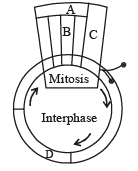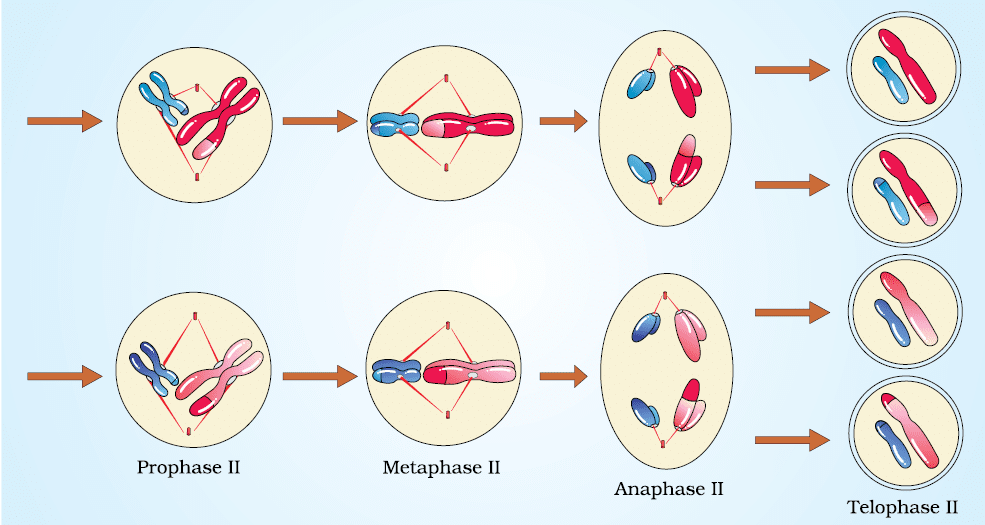31 Years NEET Previous Year Questions: Cell Cycle & Cell Division - 1 - NEET MCQ
30 Questions MCQ Test Biology 31 Years NEET Chapterwise Solved Papers - 31 Years NEET Previous Year Questions: Cell Cycle & Cell Division - 1
Which of the following stages of meiosis involves division of centromere? [2021]
Identify the correct statement with regard to G1 phase (Gap I) of interphase [2020]
| 1 Crore+ students have signed up on EduRev. Have you? Download the App |
Cells in GO phase [2019]
The stage during which separation of the paired homologous chromosomes begins is [2018]
Which of the following options gives the correct sequence of events during mitosis? [2017]
Given below is a schematic breakup of the phases / stages of cell cycle:

Which one of the following is the correct indication of the stage/phase in the cell cycle?
[2009]
Meiosis I is reductional division. Meiosis II is equational division due to
Segregation of mendelian factor (Aa) occurs during
[1990]
Mitotic anaphase differs from metaphase in possessing
[1991]
In meiosis, the daughter cells differ from parent cell as well as amongst themselves due to
[1991]
When does synapsis occur during meiosis?
Meiosis II performs
[1993]
Best stage to observe shape, size and number of chromosomes is
[1994]
Meiosis is evolutionary significant because it result in
[1994]
The exchange of genetic material between chromatids of paired homologous chromosomes during first meiotic division is called
[1996]
In cell cycle, DNA replication takes place in
[1996, 2000]
Lampbrush chromosomes occur during
[1996]
Colchicine is employed to diploidize a haploid cell as it
[1996]
Which one of the following structures will not be common to mitotic cells of higher plants?
[1997]
How many mitotic divisions are needed for a single cell to make 128 cells? [1997]
During cell division in apical meristem the nuclear membrane appears in
[1997]
Microtubule is involved in the
[1998]
A bacterium divides every 35 minutes. If a culture containing 105 cells per ml is grown for 175 minutes, what will be the cell concentration per ml after 175 minutes?
[1998]
During cell division, the spindle fibres attach to the chromosome at a region called
[2000]
Best material for the study of mitosis in laboratory is
[2002]
If a diploid cell is treated with colchicine then it becomes
[2002]
In the somatic cell cycle
[2004]
If you are provided with roottips of onion in your class and are asked to count the chromosomes, which of the following stages can you most conveniently look into?
[2004]
Which one of the following precedes reformation of the nuclear envelope during M phase of the cell cycle
[2004]
At what stage of the cell cycle are histone proteins synthesized in a eukaryotic cell?
[2005]
|
33 docs|83 tests
|
|
33 docs|83 tests
|



















